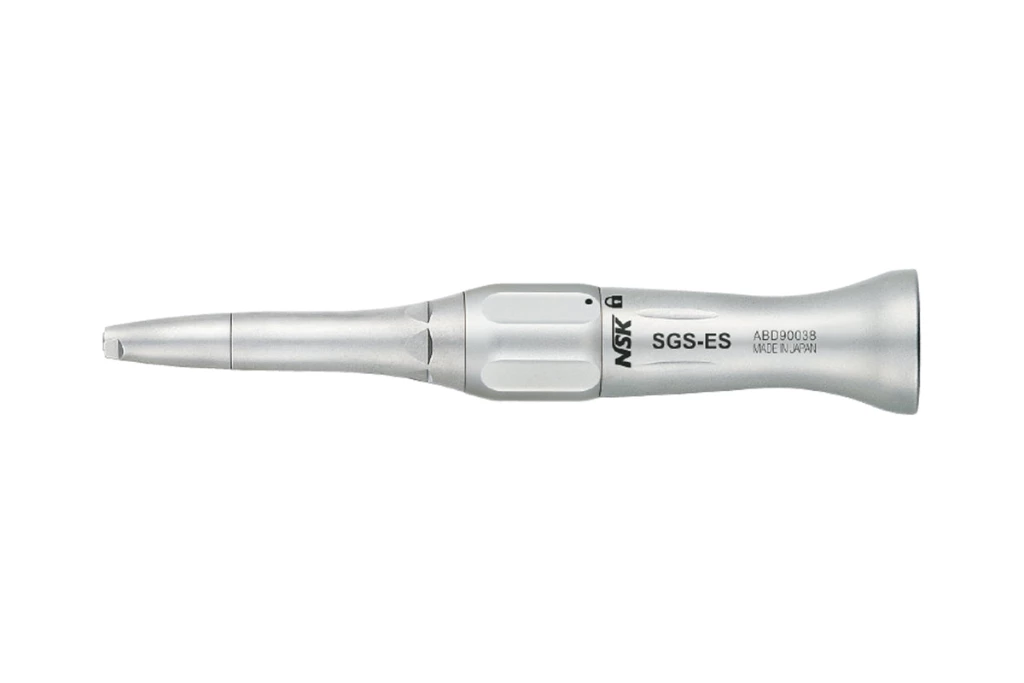

Surgical handpiece without light guide
Sold out
The item you're interested in is currently out of stock. Explore our catalog for a wide range of similar products
Sold out
The item you're interested in is currently out of stock. Explore our catalog for a wide range of similar products
Description
Common characteristics
When it comes to surgical handpieces, those without a light guide possess distinct characteristics that make them suitable for various dental procedures. Understanding these features can help dental professionals make informed decisions when selecting the right tools for their practice.
Key Features of Surgical Handpieces Without Light Guide
1. Design and Ergonomics
Surgical handpieces without a light guide are often designed with ergonomics in mind. Their lightweight construction and balanced design allow for comfortable handling during extended procedures. This reduces hand fatigue and enhances precision.
2. Speed and Torque
These handpieces typically offer a range of speed settings, allowing practitioners to adjust the torque according to the specific requirements of the procedure. The ability to control speed is crucial for both cutting and polishing tasks.
3. Noise Levels
Handpieces without light guides tend to operate at lower noise levels compared to their illuminated counterparts. This can create a more pleasant environment for both the dentist and the patient, reducing anxiety during treatments.
4. Maintenance and Durability
Many surgical handpieces are designed for easy maintenance. Without the added complexity of a light guide, these instruments can be simpler to clean and sterilize. Additionally, they are often constructed from high-quality materials that enhance their durability.
5. Compatibility with Accessories
These handpieces are usually compatible with a wide range of dental burs and attachments. This versatility allows dental professionals to use them for various applications, from restorative work to oral surgery.
6. Cost-Effectiveness
Without the additional technology of a light guide, these handpieces can be more cost-effective. This makes them an attractive option for dental practices looking to optimize their budget while still providing high-quality care.
7. Performance in Various Conditions
Surgical handpieces without light guides can perform effectively in a variety of clinical settings. Their robust design ensures reliable operation, even in challenging environments.
8. Reduced Heat Generation
These handpieces often generate less heat during operation, which can be beneficial for patient comfort. Lower heat production minimizes the risk of thermal damage to surrounding tissues during surgical procedures.
Conclusion
Understanding the common characteristics of surgical handpieces without light guides can help dental professionals choose the right tools for their practice. By focusing on ergonomics, speed control, noise levels, maintenance, compatibility, cost-effectiveness, performance, and heat generation, practitioners can enhance their surgical outcomes and improve patient experiences.
Indications for the use in dentistry
In the field of dentistry, the choice of instruments can significantly impact the efficiency and effectiveness of procedures. One such instrument is the surgical handpiece without a light guide. While many practitioners opt for handpieces equipped with light guides for enhanced visibility, there are specific indications where a handpiece without a light guide may be more appropriate. Below are some key scenarios where the use of a surgical handpiece without a light guide is indicated.
1. Cost-Effectiveness
For dental practices operating on a tight budget, surgical handpieces without light guides can be a more economical choice. These handpieces typically have a lower initial purchase price and may incur reduced maintenance costs over time.
2. Simplicity in Design
The absence of a light guide simplifies the design of the handpiece, which can lead to:
- Reduced Weight: Lighter handpieces can enhance maneuverability during procedures.
- Less Complexity: Fewer components mean fewer potential points of failure, leading to increased reliability.
3. Specific Surgical Procedures
In certain surgical procedures, the use of a light guide may not be necessary. Indications include:
- Extractions: When performing tooth extractions, visibility may be sufficient without additional lighting.
- Bone Surgery: In procedures involving bone, ambient light may provide adequate visibility.
4. Compatibility with Existing Equipment
Practices that already have a suite of handpieces may find that a surgical handpiece without a light guide is compatible with their existing systems, allowing for seamless integration and use.
5. Preference for Natural Light
Some dental professionals prefer to work with natural light or ambient lighting conditions. In such cases, a handpiece without a light guide can be advantageous, allowing the practitioner to rely on their preferred lighting setup.
6. Reduced Heat Generation
Handpieces without light guides may generate less heat during operation, which can be beneficial in procedures where heat sensitivity is a concern.
7. Maintenance and Repair
Handpieces without light guides may require less maintenance and are often easier to repair. This can lead to:
- Lower Downtime: Reduced maintenance needs mean that the handpiece can be used more frequently.
- Cost Savings: Fewer repairs and maintenance can lead to overall cost savings for the practice.
8. Preference for Manual Control
Some practitioners may prefer the tactile feedback and manual control offered by a handpiece without a light guide, allowing for greater precision in delicate procedures.
9. Situations with Limited Space
In confined spaces within the oral cavity, a handpiece without a light guide can be easier to maneuver, providing better access to hard-to-reach areas.
10. Training and Education
In educational settings, using a surgical handpiece without a light guide can help students focus on developing their skills without relying on additional lighting, fostering a deeper understanding of technique and control.
Benefits of using in dental practice
In the ever-evolving field of dentistry, the tools and technologies used can significantly impact the efficiency and effectiveness of dental procedures. One such tool is the surgical handpiece, which is essential for various dental treatments. While many practitioners opt for handpieces equipped with light guides, there are several compelling benefits to using surgical handpieces without light guides. Below are some of the advantages that can enhance dental practice.
1. Enhanced Maneuverability
Surgical handpieces without light guides are often lighter and more compact, allowing for greater maneuverability during procedures. This can be particularly beneficial in complex surgeries where precision is paramount. The reduced weight can also minimize hand fatigue for the dentist, enabling longer and more comfortable working sessions.
2. Cost-Effectiveness
Handpieces without light guides tend to be more affordable than their illuminated counterparts. This cost-effectiveness can be a significant advantage for dental practices, especially for those just starting or operating on a tight budget. The savings can be redirected towards other essential equipment or patient care improvements.
3. Simplified Maintenance
Without the added complexity of a light guide, these handpieces often require less maintenance. There are fewer components that can malfunction, which can lead to reduced downtime and repair costs. This simplicity allows dental professionals to focus more on patient care rather than equipment issues.
4. Versatility in Use
Surgical handpieces without light guides can be used in a variety of settings, including those where lighting conditions may not be optimal. This versatility allows dentists to adapt to different environments, whether in a traditional clinic or during mobile dental services.
5. Improved Visibility with External Lighting
While light guides are designed to illuminate the treatment area, many dental practices are equipped with high-quality overhead lights or portable LED lights. These external lighting solutions can provide better illumination than built-in light guides, allowing for improved visibility and focus on the treatment area without the added bulk of a light guide on the handpiece.
6. Reduced Heat Generation
Handpieces with light guides can generate additional heat due to the light source. This can be uncomfortable for patients and may require more frequent cooling breaks during procedures. Handpieces without light guides typically produce less heat, contributing to a more comfortable experience for both the dentist and the patient.
7. Streamlined Workflow
Using a surgical handpiece without a light guide can streamline the workflow in a dental practice. With fewer components to manage, dentists can focus on their techniques and patient interactions rather than adjusting or troubleshooting equipment. This can lead to more efficient procedures and improved patient satisfaction.
Conclusion
In summary, the benefits of using surgical handpieces without light guides in dental practice are numerous. From enhanced maneuverability and cost-effectiveness to simplified maintenance and improved visibility, these handpieces can be a valuable addition to any dental toolkit. By considering these advantages, dental professionals can make informed decisions that enhance their practice and patient care.
Sold out
The item you're interested in is currently out of stock. Explore our catalog for a wide range of similar products